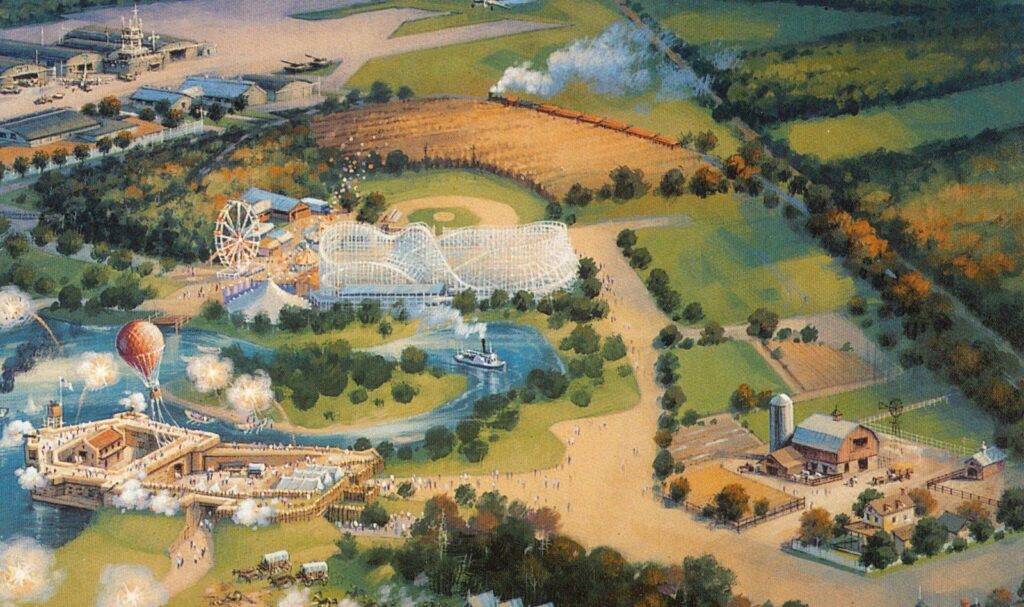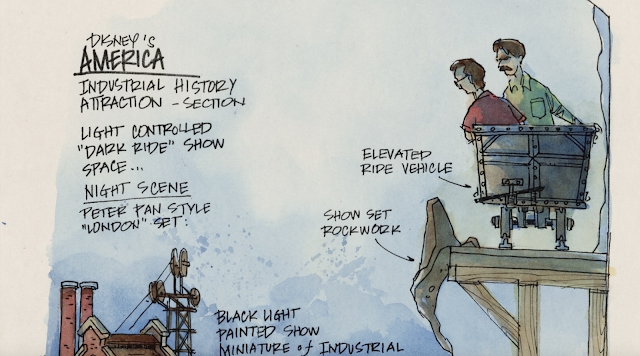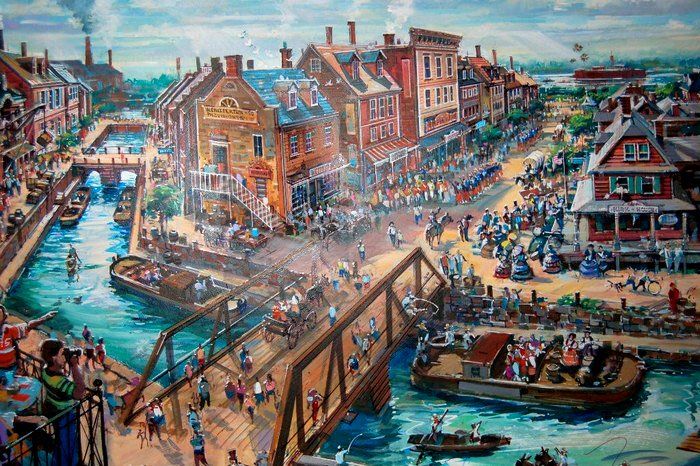Disney told the public that their new park called Disney’s America, which was to be Disney’s 5th major theme park,1 would open in 19982 and would provide an accurate yet entertaining depiction of key events and places in history. This park did not plan on cutting out difficult parts of history- a Disney executive stated that they wanted “to make you feel what it was like to be a slave or what it was like to escape through the Underground Railroad.”3 The key feature of any Disney Park is its main hub, whether that be Main Street U.S.A. or Hollywood Boulevard, and Disney’s America’s main hub was to be a Civil War-era village. The hub would then branch into several different lands portraying different eras of history. The lands that were planned included a Native American village, Presidents Square, a Civil War Fort with reenacted skirmishes, a Monitor versus Merrimack fight, Enterprise Town (themed after the Industrial Revolution), Victory Field (featuring World War II airplanes) where people could parachute from a plane, Ellis Island, and a fair with a 60-ft.-high Ferris wheel modeled after Coney Island. Planned attractions included a roller coaster called The Industrial Revolution and a Lewis and Clark river rapids ride.4

In addition to this, Disney’s America would be more than just a 400-acre theme park- in typical Disney fashion it would be an entire vacation resort complete with a 37-acre water park, two golf courses, a 280-acre campground, 2,200 housing units, 1,300 hotel rooms, and about 2 million square feet of commercial space. 5

While Disney has always had a hand in portraying American heritage, especially in their films, this is the first time that Disney had attempted to dedicate an entire physical space to this purpose. Disney’s America was going to more than a place of family fun where people entered “the world of yesterday, tomorrow, and fantasy”6– it was going to be a place where people of all ages could be educated on their past and start thinking about what that meant for the nation’s future.7 Imagineer Robert Weis stated that while this park would not be a Pollyanna view of America, it would still leave people feeling good about their country.8 What could be wrong with such a promising idea?
- Fisher, Christy. “Disney Surrenders on Theme Park.” Advertising Age 65 (42). 1994. ↩︎
- Sidey, Hugh, and Kristen Lippert-Martin. “When Mickey Comes Marching Home.” Time (Chicago, Ill.), 143 (12). New York: Time, Inc, 1994. ↩︎
- Fordney, Chris. “Embattled Ground.” National Parks (Washington, D.C.), 68 (11). Washington: National Parks and Conservation Association, 1994. ↩︎
- Wills, John. Disney Culture. New Brunswick: Rutgers University Press (2017). ProQuest Ebook Central. ↩︎
- Bailey, Charles W. “How Washington Insiders Ambushed Mickey Mouse”. The Washington Monthly, 26. Washington: Washington Monthly Company, 1994 ↩︎
- Wills, John. Disney Culture. New Brunswick: Rutgers University Press (2017). ProQuest Ebook Central. ↩︎
- Wills, John. Disney Culture. New Brunswick: Rutgers University Press (2017). ProQuest Ebook Central. ↩︎
- Sidey, Hugh, and Kristen Lippert-Martin. “When Mickey Comes Marching Home.” Time (Chicago, Ill.), 143 (12). New York: Time, Inc, 1994. ↩︎

